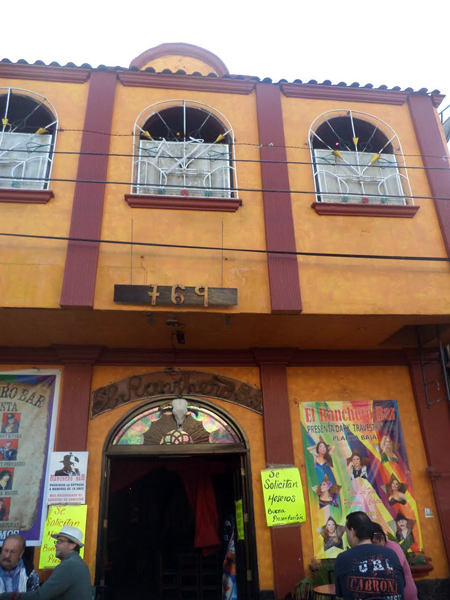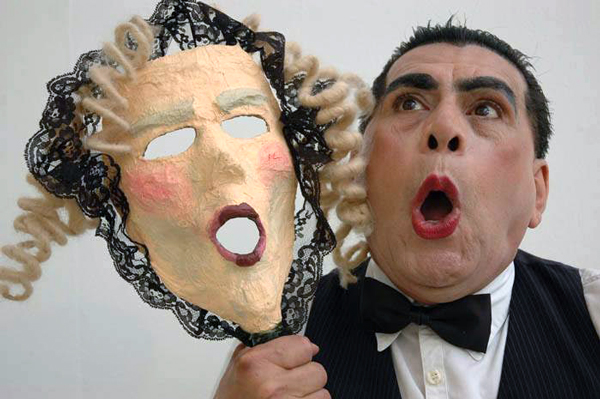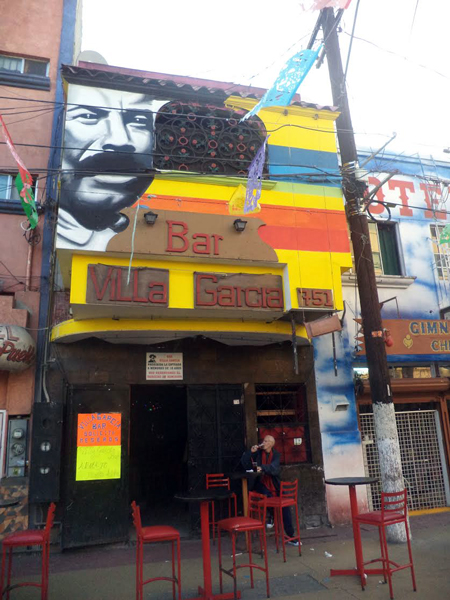|
As we celebrate LGBT Pride Month, SOHO is pleased to present the debut column of María E Curry, SOHO's new cross-border correspondent. She presents her original research on Tijuana's LGBT community and a 1991 police raid on a gay bar that ignited the city's Pride movement.
A former SOHO board member, María is a longtime preservationist from the Tijuana/San Diego border region. She brings unique insights into preservation thanks to her experience as a university professor, researcher, writer, architectural restoration professional and advocate. She is a member of the City of San Diego Historical Resources Board and has served on historic boards in Mexico City and in Baja California at the state level. She is a member of the U.S. Latinos in Heritage Preservation group and ICOMOS Mexicano, a UNESCO organization devoted to preserving historic monuments and sites. For over 30 years, María has been instrumental in saving cultural resources in Mexico City, San Diego and the border region from destruction, abandonment and faulty or inappropriate "restoration."
Searching for Tijuana's LGBTQ History
June 2016
By María E Curry
 El Ranchero Bar, site of a 1991 police raid on gay patrons, Tijuana. Courtesy María E Curry |
 Max Mejía, the late founder of Tijuana's LGBT movement. Photo by Alfonso Lorenzana, courtesy Óscar Soto |
 Bar Villa García in Avenida Argüello, Tijuana. Courtesy María E Curry |
The history of the LGBTQ movement in Tijuana and the cultural resources associated with it has not yet been documented. This article is a start toward filling this major gap.
Although there are no officially landmarked LGBTQ historic places in Tijuana, a downtown street known as Avenida Argüello with the El Ranchero Bar could be considered eligible for designation by the Baja California state government. In 1991, police raids on El Ranchero Bar and the now defunct bar Equipales, located in Calle 7ma, involved Mexican and American clients. The street confrontation that followed between the gay community and police marked the historic beginnings of the struggle for LGBTQ rights in the city.
Max Mejía (1949-2015), a nationally recognized gay activist and cultural promoter, led the protesters. Having worked as a journalist, Mejía faced the police and the media using a tape recorder, questioning their actions. This forced a dialogue between public authorities and the gay community. Mejía spoke on behalf of the people detained by the police and convinced the judges to release them from jail. The Catholic Church denounced the gay community, while groups such as the Centro Binacional de Derechos Humanos and the gay-centered Frente Internacional de las Garantias Humanas en Tijuana (FIGHT) defended the protesters' civil rights. Even the mayor of San Diego contacted Tijuana city officials because Americans were involved. These seminal events made front-page news spanning eight columns in the local newspapers.
After the protest, the LGBT community little by little got recognition and respect. Now gays and lesbians can walk without fear of the police in downtown Tijuana and patronize gay bars such as El Ranchero without being challenged or harassed. Tijuana's 15-year-old Pride Parade starts in Avenida Revolución and ends in this emblematic bar.
Mejía lived in San Francisco before arriving in Tijuana in 1990. He had a unique vision that changed many things in favor of the city's LGBT movement. As an anthropologist, actor and sensitive, intelligent person, he saw culture, art, history and historic preservation as the main ingredients to achieve respect and acceptance for LGBT people.
Together with Óscar Soto Mejía gave life to the magazines "Frontera Gay" and "Arte de Vivir." Both publications focused on border art and culture from the perspective of gender by regional artists, poets, and writers. There were chronicles, reviews, columns, and stories, as well as images and poetry. These two magazines gathered the most important events of everyday life of the region's gay community for over 15 years, as well as chronicling artistic and cultural life on the border. The first festivals of sexual diversity in the 1990s in Tijuana, which Mejía coordinated, are memorable. His articles and opinions about the city, gay life, HIV/AIDS, and human rights included the full spectrum of LGBT people. They provide invaluable material for documenting Tijuana's LGBT history.
In the last years of his life, Mejía promoted historic preservation with the reutilization of public spaces in Avenida Revolución for artistic and cultural activities through the collective "Queremos Tijuana" (We love Tijuana).
After his death in 2015, he was recognized in the "Jornada Cultural Against Homophobia" in Tijuana, and in the Seminar for LGBT history in México City.
During the last decade, the LGBTQ community appropriated Avenida Argüello despite city government efforts to discourage this by creating a Mariachi Plaza and other tourist attractions. Once again, the community successfully organized to oppose discrimination and their ouster.
There are more historic resources in Tijuana that are meaningful to the LGBTQ community and in need of documentation. Since the majority of these sites are located downtown, with Americans mixed in similar numbers with Mexicans, we need to identify and preserve this Tijuana history and address it in the larger context of the Mexico/U.S. border region.
Watch for future articles on Tijuana history and historic preservation in the border region in SOHO's eNews.
|
2025
2024
2023
2022
2021
2020
2019
2018
2017
2016
2015
|






